20 Family Members Who Turned Out to Be Wolves in Sheep's Clothing

You decided to cook an exquisite dish, you followed the instructions strictly, keeping all the proportions correct according to the recipe...but the result is a million miles away from your expectations. Does this sound familiar? We’re sure that all of us have faced this situation at one time or another. So what’s the deal?
We at Bright Side have decided to go through some common cooking mistakes that may ruin the taste of your most favorite dish.
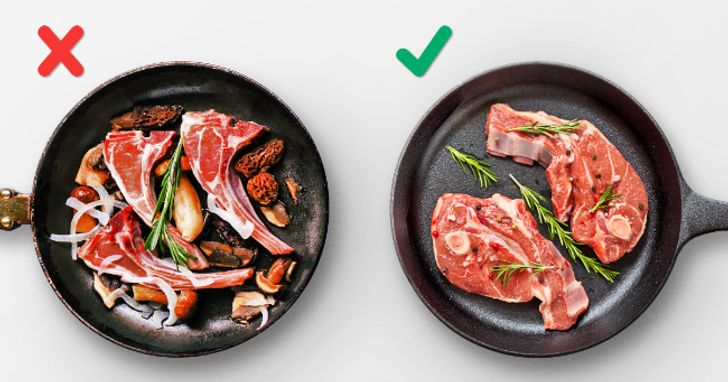
Remember: if you want your meat to have that incredible crispy crust, you will have to give it space to brown. Otherwise, when overcrowded, the meat will actually boil.
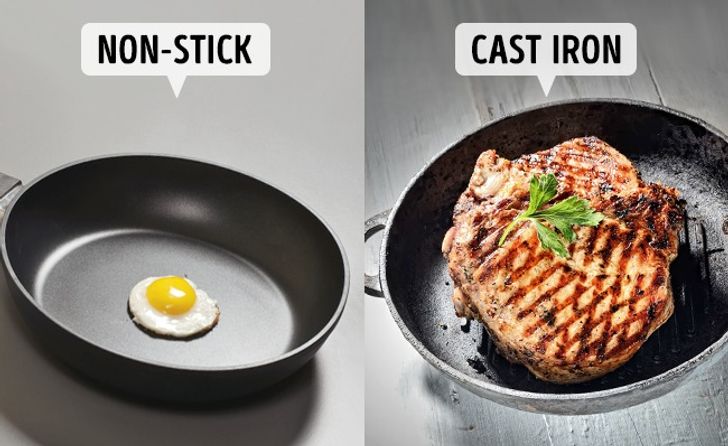
Another reason for failure when cooking meat with a crispy crust is using non-stick frying pans. This piece of cookware usually heats less than ordinary pans, so you’d be better off using them for omelets and pancakes. As for meat, try using a grill pan or a cast iron pan.
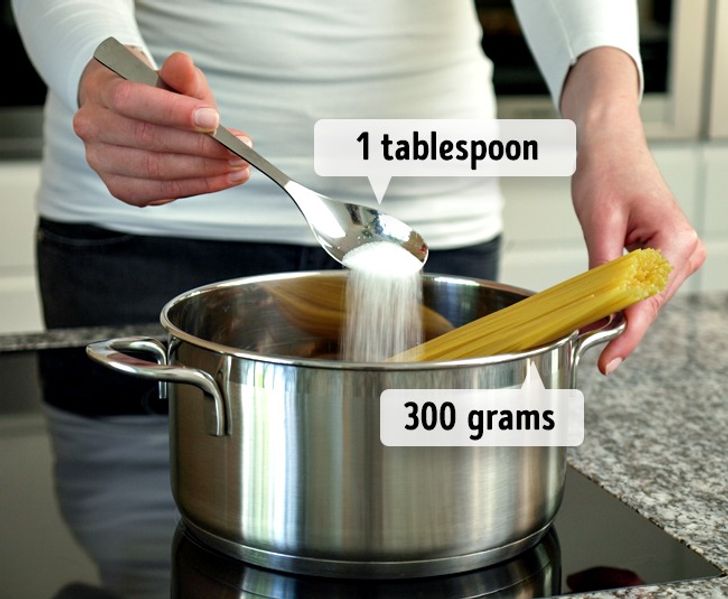
The basic rule when cooking perfect pasta is salting the cooking water. A lack of salt will lead to tasteless pasta, and no sauce will save the dish. If you’re not sure about the proportions, here is one tip for you: use one tablespoon of salt per 300 grams of pasta.
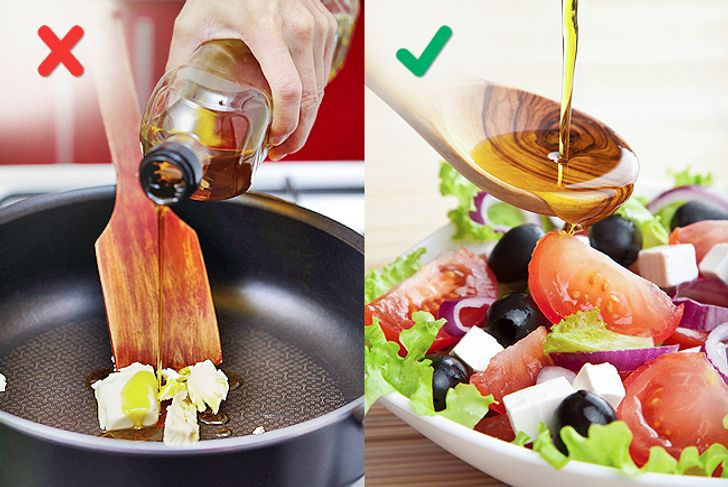
At high temperatures olive oil loses all of its nutritional value and starts to burn, and that can ruin the taste of your food completely. Therefore, it’s a better idea to use olive oil for salads and refined sunflower oil for frying.
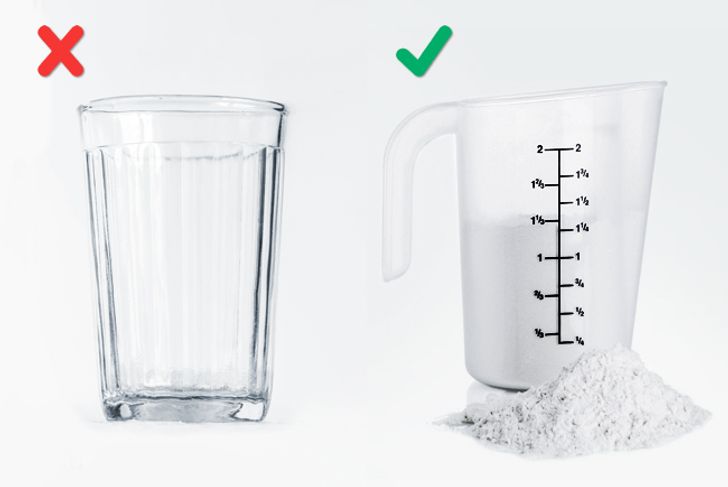
Many of us measure the quantity of the ingredients for dough using a glass or a cup without paying much attention to the fact that it holds different volumes of dry and liquid products. Remember: baking requires exact compliance with the given measurements. Therefore, if you don’t remember all the tables of weights and measures by heart, try using a special measuring cup and kitchen scales.
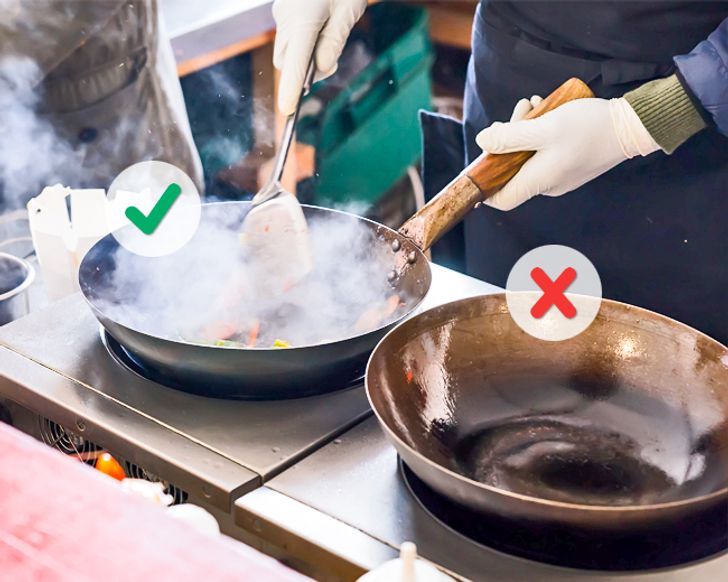
The top chefs say, ‘If you think that your pan is already hot enough, wait for another two minutes and proceed to cook after that.’ You will definitely need a well-preheated frying pan to cook vegetables and to get that crispy crust on meat.
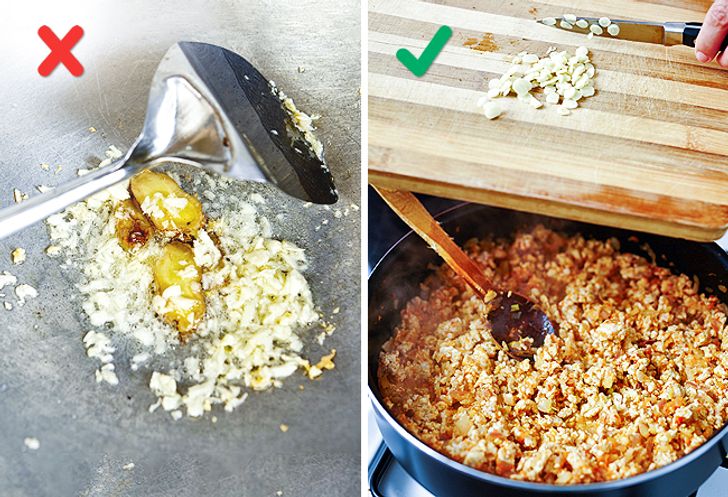
Most recipes suggest that garlic should be added at the end of the cooking process or even removed from the dish after 2-3 minutes of cooking. Garlic contains far less water than any other vegetable, and it burns very quickly. When overcooked, garlic can add an unpleasant taste to your dish.
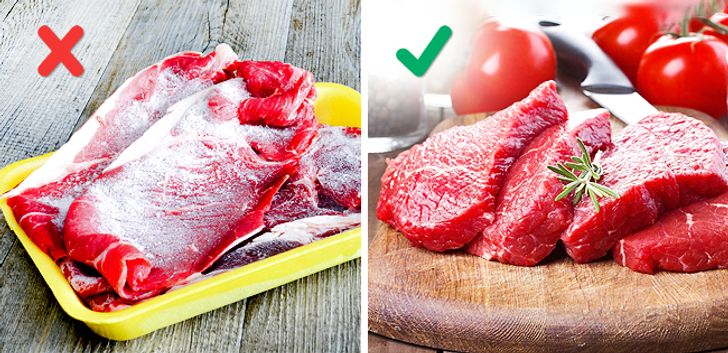
Before cooking meat, make sure you let it stand at room temperature for a couple of hours. The room temperature-rested meat will be heated more evenly, while frozen meat, on the contrary, may look like it is well done, but it will still be raw inside. The same rule applies to baking meat in the oven.
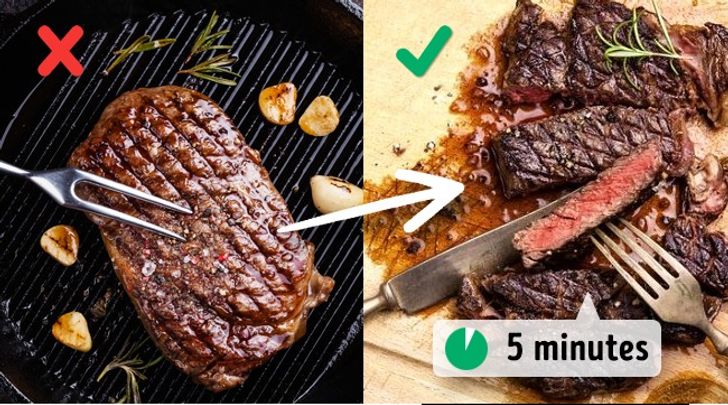
Even if you can’t wait to try your dish, it’s better to keep your hands away from cooked meat for a couple of minutes. Try not to dig in as soon as the meat is ready. Be patient, and you’ll be impressed by the taste of your dish.
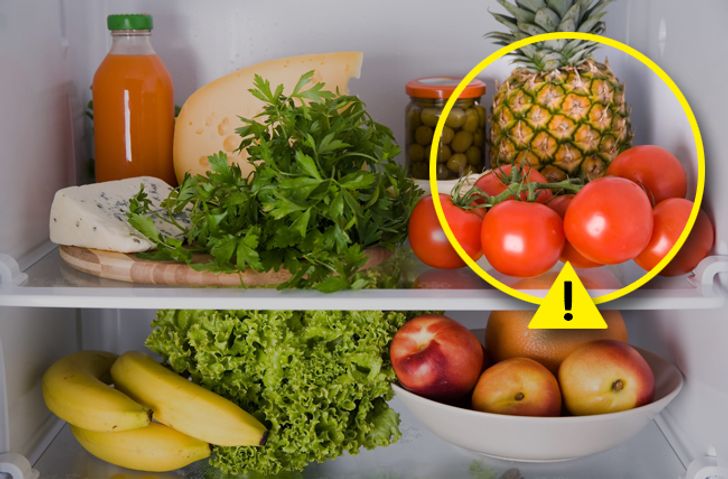
It’s not a good idea to store all the food you have in the fridge. Tomatoes, onions, garlic, potatoes, zucchini, eggplants, and various tropical fruits such as kiwi and mango taste better when kept warm. When stored in the fridge, these products lose their freshness and go bad more quickly.
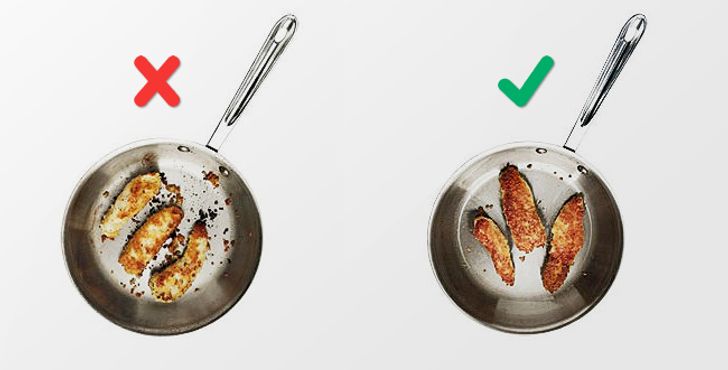
It’s not necessary to flip your meat too often while cooking. You may end up with dried meat or unattractive fish with no coating. Just leave your future masterpiece in the pan, and don’t disturb it too often — that’s one golden rule of any chef.
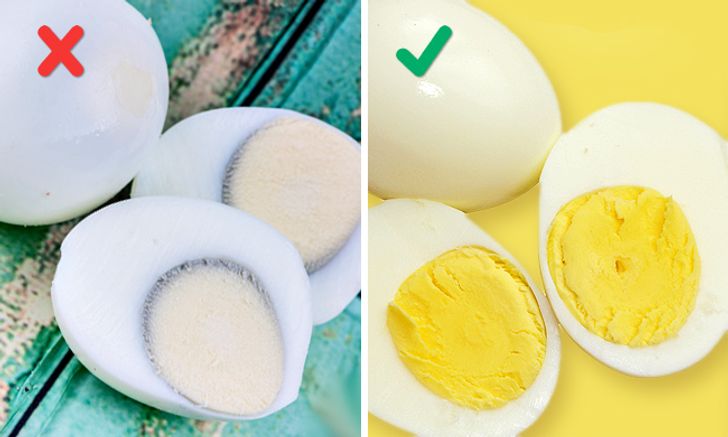
Have you ever found this gray substance instead of yolks and whites tasting like rubber? Actually, it has nothing to do with the quality of the eggs. Most likely, you have simply overboiled the eggs. To get the right color and texture, remove the eggs from the stove right after the water starts boiling, and leave them under the lid in hot water for about 10 minutes. This way the egg whites and yolks will get proper condition and color.











